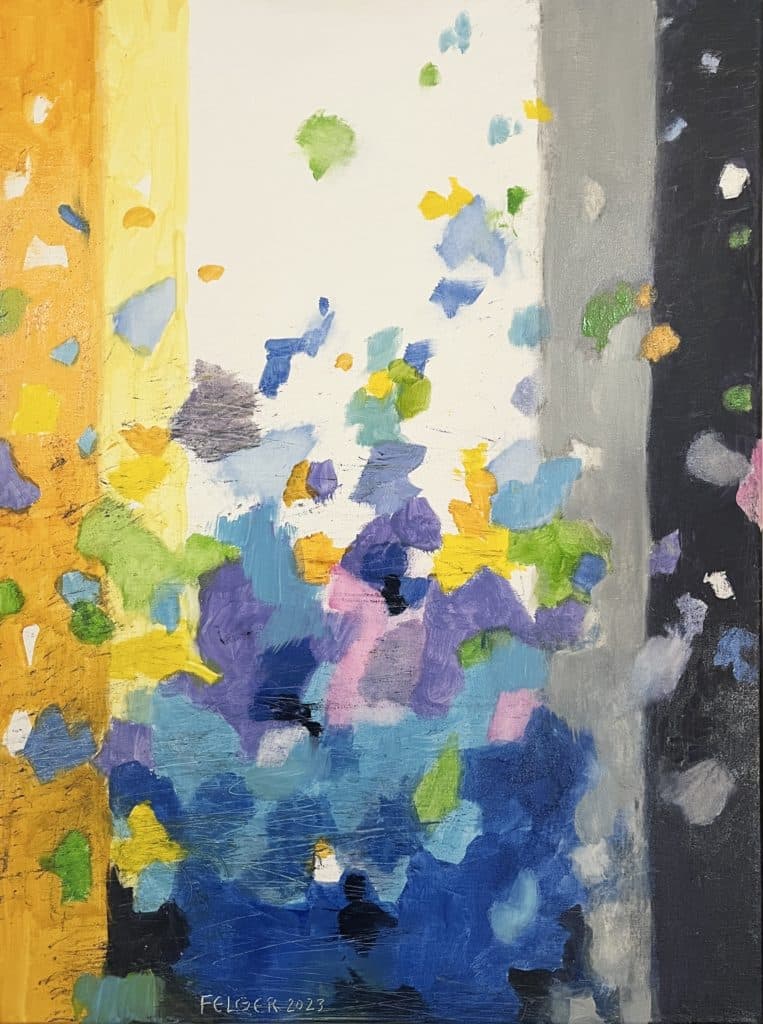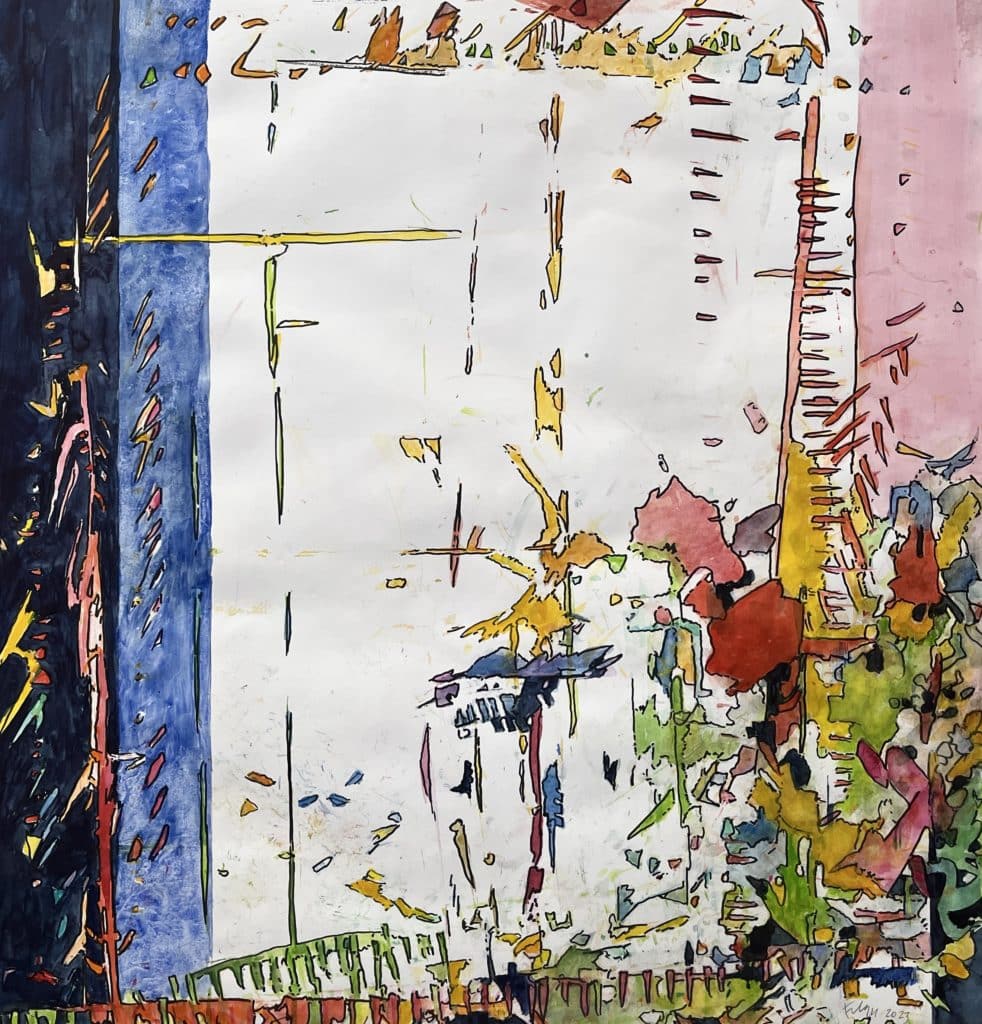Untitled
I reflexively thought of Caspar David Friedrich, whose 250th birthday this year has led to increased attention, at least in Greifswald, Dresden, Hamburg and Berlin, places where Friedrich worked and where the large collections of his works are located today. In the long term, too, Friedrich’s influence will be dominated by regional focal points. He was an artist with strong ties to his homeland, as close to the Elbe Sandstone Mountains in life and art as Andreas Felger is to the Swabian Alb. To continue this thread: Both artists painted landscapes to a large extent and both were/are people of faith whose respect for creation goes so far that every painting shares in it because this respect is part of their world view. The reflex was triggered by the association of a window opening in the face of two actually abstract compositions by Andreas Felger from 2023.
The view from the window could be understood in a very mundane way; as a prototypical compositional form in German Romantic painting, however, much more comes into view in front of the window: Heaven, longing, faith … perhaps most famously Friedrich’s Woman at the Window painted a good 200 years ago in Dresden, with a double window view, Elbe and sky, earth and cosmos separated. In Felger’s work, the polarity of frame and view, closed (pictorial) space and looking into the open is initially related to the picture as such, i.e. its format and the material of the painting. But emptiness, light and the impression of levitation remain connected with their traditional meanings, which point to faraway, spiritual, higher dimensions.
At the same time, it is characteristic of Andreas Felger’s art that the viewing of his paintings is not overburdened by these meanings, because it also lives from the joy of the colouristic interplay, the lightness of the brushstrokes. These appear particularly free here, as if a gust of air had whirled up the paint from the centre of the picture and the viewer becomes a witness to the pictorially paused moment, after which the particles sink or float away. One can observe this spectacle with aesthetic pleasure … and also sense a spiritual dimension, an intermediate state; colour matter that dematerialises in air, light and the idea of an ‘outside’, beyond the framing. This appears in the relationship between watercolour and oil painting very differently, linearity and transparency versus painterly depth and density of colour. Compositionally and in terms of the lightness of the colouring, however, Felger’s hand retains similarities.
Text by Marvin Altner
Marvin Altner holds a doctorate in art history and is a lecturer in art studies at the University of Kassel. After a traineeship at the Hamburger Kunsthalle, he worked as a research assistant and curator at museums in Berlin and Hamburg and as a freelance author in the field of visual arts from the 19th century to the present. Since 2012, he has been teaching at the Kunsthochschule Kassel in the art studies program and works as a research assistant for the Andreas Felger Kulturstiftung, including as author, exhibition coordinator, and supervisor of the database of Andreas Felger’s works.


